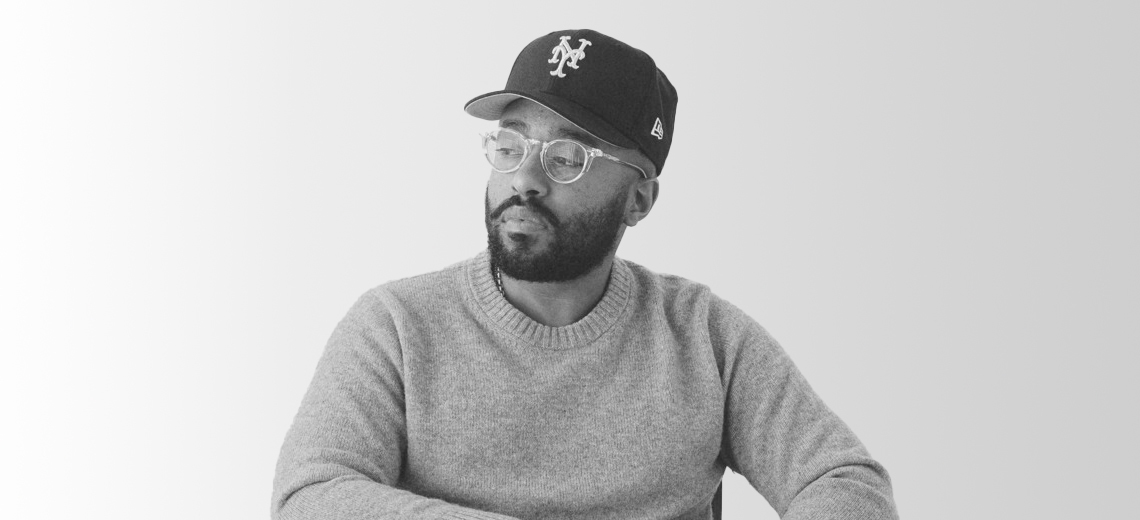This is an episode of the Glossy Fashion Podcast, which features candid conversations about how today’s trends are shaping the future of the fashion industry. More from the series →
Subscribe: Apple Podcasts • Spotify
In 2018, Chris Echevarria launched Blackstock & Weber, the Brooklyn-based footwear brand that has become well-known for its updated takes on classic loafers.
“I own the business 100%, and it’s grown 300% every year since we started,” Echevarria said on the Glossy Podcast.
Still, he’s finding time to launch other businesses and tackle new projects: In November, he introduced the brand Academy, which brings his signature preppy-with-a-twist style to menswear. And, after being announced as creative director at Sperry in September, his debut Sperry by Chris Echevarria collection debuted at Paris Fashion Week Men’s last month.
On this week’s episode of the Glossy Podcast, Echevarria discusses the throughline of his projects, as well as his long-term goals for his businesses and a recent advertising pivot that’s working to his brands’ advantage. Highlights from the conversation, below, have been lightly edited for clarity.
Taking inspiration from the sneaker world
“When I wanted to start this company, we were in this moment where sneakers were extremely popular. And I’d worked with a lot of prominent companies … and it was interesting that a lot of those companies that we revere as these institutional or classic brands just weren’t changing the way that they were speaking to their consumers. They were still treating younger consumers as if they had no place in these places. And, as we saw later on, those institutions started to have problems. I saw this early on, and I said, ‘Hey, there aren’t a lot of brands that have that classic flair and that classic idea of artisanal workmanship, and [also] communicate with the consumer in the way that they want to be communicated with.’ So, I started off with shoes, because I’d been in pretty much every men’s store in America. And every time I’d go into a men’s store, the first thing that you would see is your shirt, your pants and things of that nature. And if you finally made your way to the back of the store, you would see your shoe section. And when you get to the shoe section, you have the same styles, and they’re all in black and brown. And as a parallel, the sneaker industry was doing something completely different. … Let’s say the Jordan Brand was focusing on the Jordan 1 in that cycle, right? … Every week, the Jordan 1 was coming out in a new colorway. And I noticed that, week after week, kids were lining up for the same model shoe, but just in a different color. And I said, ‘Hmm, I think that this could be viable in this place where these black and brown shoes exist.’ So I decided to give it a whirl.”
Choosing wholesale partners
“I don’t have wholesale partners; I have friends. I don’t do business with people I don’t know. And if anybody wants to do business with me, I have to get to know them first. So our first partners were people that I’m friends with: It was Andrew [Chen] at 3sixteen who gave us our first shot at physical retail, along with Ronnie Fieg at Kith. And those are the two doors that we have to this day. Actually, we do have one more in Hong Kong. It’s called Leather Healer, and they’re a big shoe retailer out there. And what made me want to sell there is the guy that owns it flew out to meet me and have breakfast with me. … And he was wearing the shoes when he came and had a passion for the product that we make. … I’m here in Brooklyn, so it’s really cool to see people across the world that love your shit. So that was a yes. As far as other wholesale partners, I don’t necessarily see that as a big pillar in our business right now. I think that we are doing alright without it. … That wholesale industry is a whole other beast.”
A new generation’s Ralph Lauren
“I want us to be I want us to be No. 1. But more than anything, it goes back to adding value to the space: I want to be a brand that people look at and say, ‘Hey, this brand isn’t just selling product for product’s sake; they’re adding value to the space, They continue to challenge the narratives that are around certain products. They continue to reinvent products that we know and love. They continue to introduce us to products that we may know and love.’ And, as I look at [our business verticals] Blackstock & Weber, Academy and General Store, and as I look at Chris as a designer, 20 years from now, I [want it to be apparent that] Chris really played his heart out in this arena. … And what happens as a result of that is to be seen. I think that we look at Ralph [Lauren] as the pinnacle of success. But there’s only one Ralph. And there was only one time period of Ralph’s growth in the way that he went about his business. And, as a result, he became who he was. So I don’t know what that looks like from a business that starts in 2018, as opposed to a business that started in 1967. One would hope that it looks like the trajectory of Ralph, but I’m open to the possibilities of what it may look like for a business of this generation.”




